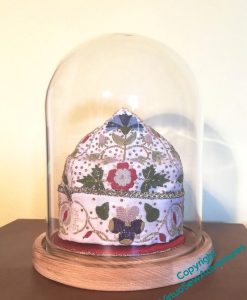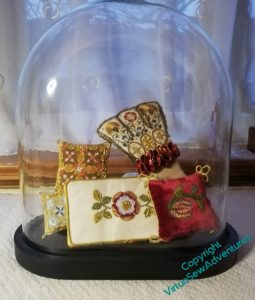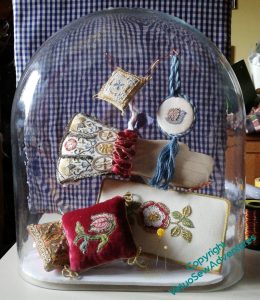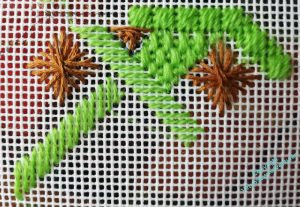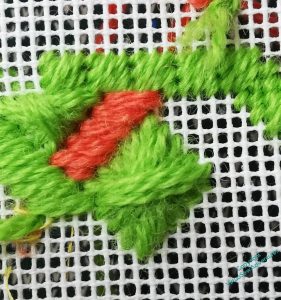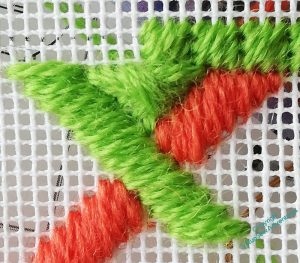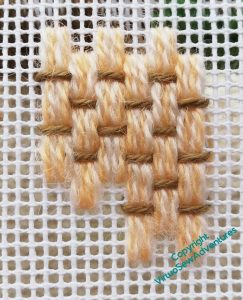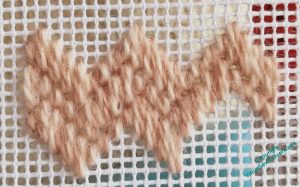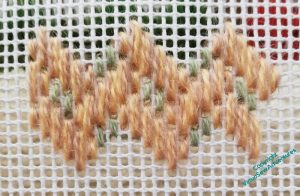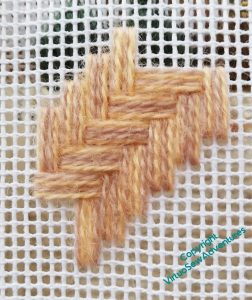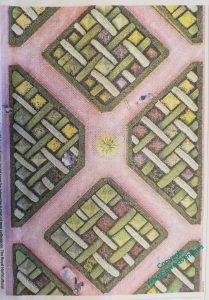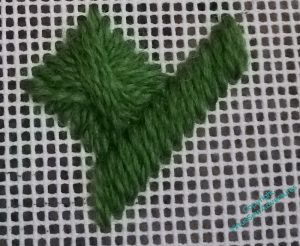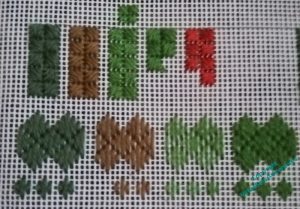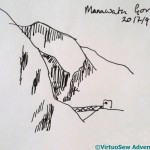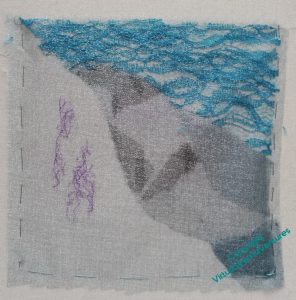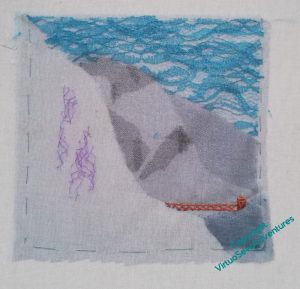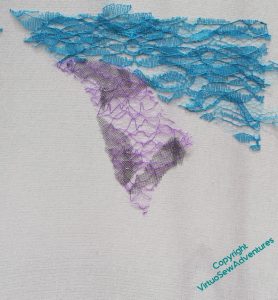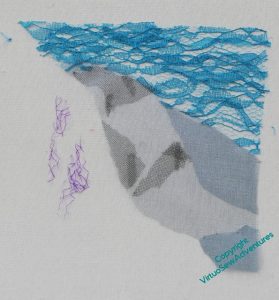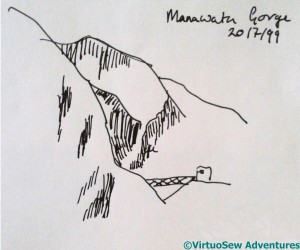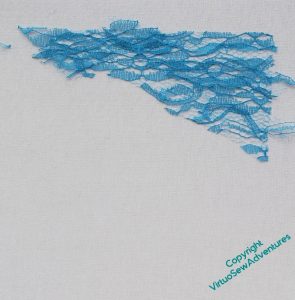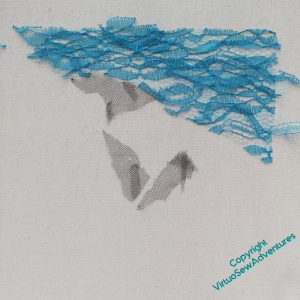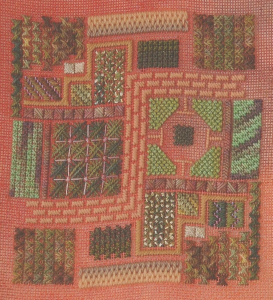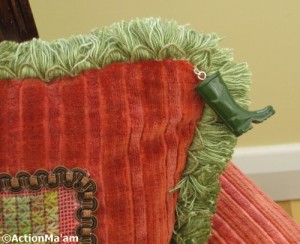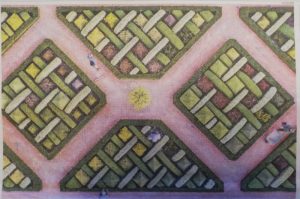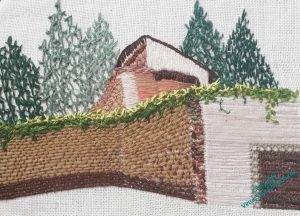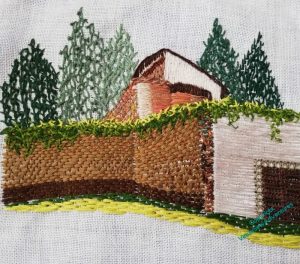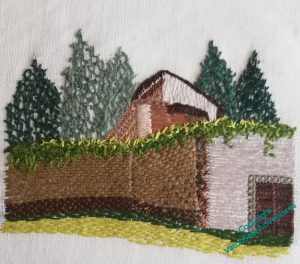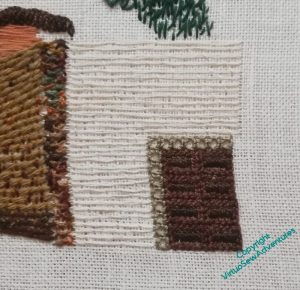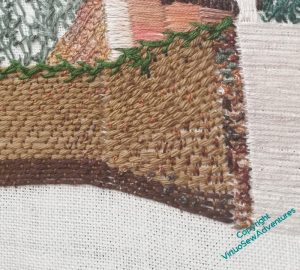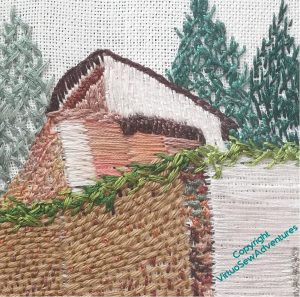Tag: experiments
A tree for the trinkets..
When I had the idea about using a parlour dome for the Violets and for the necklace, I realised that I would need to play with how I displayed them, trialled the Tudor Nightcap in the dome and realised that I could now put it on display.
So what about all the other Thistle Threads pieces?
Well, it turns out you can get parlour domes that aren’t round, so I got the largest I could bring myself to buy and then stopped to think…
I started by playing around with propping the various pieces I’ve been planning for that Winter Decoration Corner against one another within the dome. It’s a flattened oval, and quite high, but anything I could improvise seemed not to have the height I wanted without taking up all the display space.
I think this shows the idea will work, but it doesn’t really have the presence that the pieces deserve.
This is better. I’ve used offcuts of the foamcore that I bought to help me with Nefertiti and Akhenaten to create the base that will sit inside the glass, sandwiching the beginnings of the wires forming the tree between two layers. I’ve built up a support for the green and orange cushion at the back using smaller bits of foamcore, and wrapped pipe cleaners around the wires.
It’s not perfect, but I’ve set it up in the hall where I will pass it every day, to work out whether I like it. Then the idea is that I will have a lovely messy hour or so covering the wire with papier mache, allow it to dry, and paint the whole thing gold.
The Tudors were as fond of bling as the ancient Egyptians, after all!
Testing, Testing (phase 3)
There is still much to play with, with regards to the the stitching for the Knot Garden Parterre.
At this point, I’m trying to balance accurate impressions – and therefore useful testing – with not tearing my thread to pieces or wasting any of it. At present I am still thinking of doing this out of stash, if possible, which is why I’m using an impossibly bright shade of green here – I’m unlikely to want it in the real thing!
Now, you see here that the short Parisian Stitch enticed me into a broader strap than I was intending, and it has unbalanced the Mosaic Stitch of the border, which in turn became Scotch Stitch as it turned into the diagonal, and lost the pattern it had.
Here, by contrast, I have demonstrated one of the other hazards of canvaswork, especially for my astigmatic eyes – I’ve suddenly managed to turn a Diagonal Rhodes Stitch into a slightly oblong and twisted diagonal Rhodes stitch. I didn’t see it happening, so I am going to have to guard against it with some care.
I think I need to make my stitches and straps bigger, too: the shape drawn on the canvas is the size of one of the ones on the finished piece, and I started the outer border on the centreline, and turned onto the diagonal at the appropriate point. The first horizontal row of diamonds should have two in it. Two properly square diamonds, that is!
And here you see the challenge I need to address: the diagonal Rhodes Stitches start with a horizontal or vertical stitch, so what I need in the angle between the straps is a gap (as you see top and bottom of this intersection) and not a thread (as you see left and right)
At this point I’ve been stitching and unstitching so often that I have lost count of myself, and keep on losing track of the stitch lengths I intend, so there will be a pause to regroup!
Testing, Testing (phase 2)
I’ve been playing around with possible stitches for the pathway in the Knot Garden. In the source picture, it looks to be made of bricks laid in a pattern, rather like a parquet floor.
I don’t feel I’m obliged to replicate that pattern, but this one on the left is altogether too square, and won’t help the sense of movement I’m going to need to counterbalance the borders, which I rather expect to be rather static, given all the Diagonal Rhodes Stitch that’s going to be happening.
The one on the right is the same Medieval Mosaic Stitch from Jo Ippolito Christensen that I used, voided, in the sunglasses case, but this time worked exactly as diagrammed. I like it, and it’s easy enough to work, but I don’t think it does the job I will be asking it to. I’m sure I will work it for real one day, but not for this project!
When I replaced the stitches that were voided in the sunglasses case with stitches in a different colour and thread, to point up the woven pattern, I got something a lot more hopeful…
I like this one a lot. Although I must admit it does rather recall the diaperwork you sometimes see on Tudor buildings, so maybe not very floor-like!
And then I found another, one that actually looks a lot like herringbone brickwork without any adaptation.
I like this one a lot, too.
I will have to see which of these presents itself most strongly when I’ve got more of the ideas crystallised.
Testing, Testing… (phase one)
Remember this, the Knot Garden parterre?
It’s going to require a little more precision and therefore a little more planning than I usually indulge in. So there’s also going to be a bit more experimentation than usual. I might not go to the length of actually charting the finished piece, but I’m certainly intending to have a very clear idea of what is going where, and what thread or threads I’m going to use.
I’ve been intrigued to note that, from pulling out a huge variety of threads to use, an assortment of fibres and an assortment of colours, I’m beginning to restrict my ideas to a much smaller palette of threads and stitches.
As I looked at the picture more closely, it became clear that the squares within the beds were topiary pyramids. Maybe some are suffering from box blight, hence the colour variations, but this gave me a good place to start experimenting. I’ve gone to the trouble of framing up a piece of the canvas I’m going to use, so as to experiment properly, and my first observation is that I am going to need to be on top form when I work this, because it’s dreadfully easy to go adrift!
However, I think it’s fair to say that Diagonal Rhodes Stitch makes a fine pyramid in topiary! The straight stitches are in the same colour, which they won’t be, but I think the stitch length, compared with the Rhodes Stitch, looks about right for the width of the little hedges that create the strapwork effect.
I’ve also been testing out other threads and stitches – tapestry wool, soft embroidery cotton, stranded cotton. I want to have varying textures and patterns within the strapwork, creating a nice harmonious whole – but a stitched harmonious whole. I could easily chart – or even freehand – a tent stitch reproduction of the picture, but it wouldn’t have the personality needed for the place it’s going to live. Textured stitches will help to create that personality.
Manawatu Gorge – finishing the first experiment
This is such a wild and not-my-comfort-zone sort of experiment that posting the original sketch each time seems sensible. There’s a lot of interesting texture hinted at in the sketch, and I don’t think layered gauze is going to reveal it, so another version is definitely on the horizon at some point!
In the meantime, and bearing mind my original thought that the cross hatching indicates some combination of rocky outcrops from, and shadows on, snow, this version layered a blue, slightly sparkly gauze repeatedly over itself and some fragments of the black and purple to create the look of the cross hatching.
Looking at it as I write this, with the sketch on view in the top corner, I realise that even with that simple sketch to work from, I’ve not accurately observed all the details. This is why drawing and sketching are hard: it’s not the control of the pen that’s difficult, it’s the accurate observation of the subject that requires time and practice.
My memory of a rusty-red girder bridge with some sort of lifting engine on one end is really what has kept this sketch in my mind off and on for years, so having noted it needed some land to stand on, of course I wanted to add it in. Since I’m also working on William Marshall, silk was what I had to hand, so iron girders are all in silk!
At this point, I intend to pause. I feel as though some additional stitchery on the rocky bits might help, but equally, maybe I’ve learnt all I can from this sketch, and the thing to do is undo it all and think more about the canvaswork!
Continuing to experiment with Manawatu Gorge..
One should always try to think a project through at least a little bit. I didn’t. I thought that once I got started this would be easier than it turned out to be.
The black net was fairly easy to cut and catch down, and I wanted that to stand in for the shaded areas on the sketch, but the purple net was an unrelieved menace – it caught on the threads I used, and tied itself in knots, and even failed to have a bit of itself under some of the stitches I made, so it didn’t stay in place. All in all, rather exasperating, and even worse when I decided that it wasn’t, in fact, doing what I wanted it to do, and had to remove it again!
I’m still meditating on the possibility of a canvaswork version of this, possibly made even more abstract, but I still want to finish this one some way, so, onward!
I had another look at the sketch and realised that the engine house for the bridge needed something to stand on – that explains that extra bit of gauze in the bottom right-hand corner. Then I decided that I would roll back from the complicated bits of layering I’d been planning, and simply try to create recession with tone. So far, I think it is working…
Manawatu Gorge Experiments
As you see, this sketch is from a long time ago. It was probably done in about ten minutes, in a pause on the road out of Palmerston North.
I found it a little while ago, and thought it would be interesting to see whether I could produce something pleasing in stitched form, using this as the basis. In particular, since it’s so long ago, and I couldn’t for the life of me find any other source material, this is all I have.
My first idea was to play with layered laces and gauzes, purples and blues because we were there in winter, and there was a lot of snow, bright blue skies and wonderful coloured shadows. There were some limitations in the laces and gauzes I could get hold of, so some of the adventure will be in making this work!
I haven’t drawn anything on the fabric, and I am cutting my laces and gauzes more or less freehand against the sketch. Compared with the painstaking stitching on William Marshall, the pieces are almost tacked into place, and there isn’t at all the same sense of quiet productivity.
I’m also contemplating a canvaswork, and more abstract, version of Manawatu Gorge, but just while I was writing this post, I came up with an idea for another layered gauze version. So I have more experiments to make!
In other news, Episode 76 of Slow TV Stitchery is now live: In which the Hunting Cat piece is mounted, and we discuss feature creep, tapestries as woven wallpaper with acoustic properties, and the depiction of layers of recollection.
Another new project to think about
Remember this? It was an exploration of canvaswork, a very long time ago, and when I’d finished it, I hadn’t the vaguest idea what to do with it. Then my cousin said she knew exactly what to do with it, and could she have it, please?
She and her local soft furnishing people turned it into a rather fabulous cushion, and it has been sitting happily kicking welly-booted heels in the air on a chair in her conservatory ever since.
Fast forward to some recent reorganising in her house, and she has a another chair that might be interested in a companion piece. Not the same shape, and not the same canvas, fortunately, and not necessarily the same colours either, just similar. I have to find the canvas before I can get excited about this one, so it will be a while, but I do have something to think about.
My cousin found a gorgeous drone shot of a knot garden in a National Trust property, and said “Start from this!”. The central tree might even end up as a sculpted piece of one of the pile stitches – that would be fun, wouldn’t it!
I’m thinking I might choose to use a brown canvas this time, and use as many variegated greens as I can lay my hands on. But as I’m not sure where I’ll find the canvas, my ideas have plenty of time in which to change….
Watermill Stitchery – Convento del Carmine
Once the walls were in place, I worked on the creepers.
As you can see here, this involved not just more of the same, but a few extra tendrils, and some mixing of the number of strands and stitches used to create the right tangled effect. Feather stitch, floral feather stitch, feathered chain stitch, all layered up in a variety of shades, to increase the tangle almost to “Sleeping Beauty” proportions.
Yes, good so far.
Then I decided that it really needed the grass at the front to pull the golden green forward, as it was in my memory.
Not like this, however. I think the choice of irregular running stitch is right, but although I chose to use six strands for the lighter colour to help pull it forward and push the building back – which is a good, rational, thought-through reason – it hasn’t worked as I envisaged. Cue some muttering and unpicking!
But I got there in the end…
In fact I’m very pleased with how this turned out. It allows me to demonstrate how to create different textural effects, even with a fairly restricted choice of thread – nothing exotic here, pearl cotton, soft cotton and stranded cotton.
I could add more details – roughen the stone further, add windows and doors to the walls in the shade – but I don’t think that the picture would be materially enhanced. And almost the whole trick with representative embroidery is the same as it is with painting: the finished piece is a new creation, not a copy of the thing it represents, so it is more important to end with a pleasing piece than an accurate report.
Watermill Stitchery – more progress on the Convento
I finally had a couple of inspirations for the rendered wall and the door. I used two shades of brown pearl cotton for the panels on the door, outlining them using long legged cross stitch, and filling in the panels with satin stitch. While I was doing that, it occurred to me that this was a good opportunity to demonstrate, again, just how different a stitch can look if you use different threads to stitch it with. So the render is rendered (sorry!) in Burden stitch, using two strands of light coloured stranded cotton, and already you can see how very different it looks in comparison with the soft cotton. It’s very satisfying when something works that well!
It was the golden light on the creeper that originally attracted me to this scene, so I need next to work out how to represent the creeper. I’m starting with feathered zig zag chain stitch, and I’ll use several colours of thread to create the variation of colour in the foliage.
I’ve added a few French Knots to the rough stone wall, to roughen it up a bit, and tweak the colour balance.
You can see here the start of the middle shade for the creeper, again using feathered zigzag chain stitch, and trying to zigzag the zigzags to vary how much of each colour shows.
You can also see that the facing light rendered wall is now done, and I have simply turned the Burden Stitch through ninety degrees. I think I may be beginning to be pleased with it!

